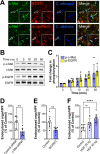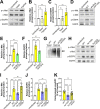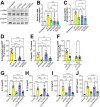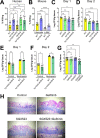This is a preprint.
Candida albicans stimulates the formation of a multi-receptor complex that mediates epithelial cell invasion during oropharyngeal infection
- PMID: 36865306
- PMCID: PMC9980113
- DOI: 10.1101/2023.02.23.529756
Candida albicans stimulates the formation of a multi-receptor complex that mediates epithelial cell invasion during oropharyngeal infection
Update in
-
Candida albicans stimulates formation of a multi-receptor complex that mediates epithelial cell invasion during oropharyngeal infection.PLoS Pathog. 2023 Aug 23;19(8):e1011579. doi: 10.1371/journal.ppat.1011579. eCollection 2023 Aug. PLoS Pathog. 2023. PMID: 37611070 Free PMC article.
Abstract
Fungal invasion of the oral epithelium is central to the pathogenesis of oropharyngeal candidiasis (OPC). Candida albicans invades the oral epithelium by receptor-induced endocytosis but this process is incompletely understood. We found that C. albicans infection of oral epithelial cells induces c-Met to form a multi-protein complex with E-cadherin and the epidermal growth factor receptor (EGFR). E-cadherin is necessary for C. albicans to activate both c-Met and EGFR and to induce the endocytosis of C. albicans . Proteomics analysis revealed that c-Met interacts with C. albicans Hyr1, Als3 and Ssa1. Both Hyr1 and Als3 were required for C. albicans stimulation of c-Met and EGFR in oral epithelial cells in vitro and for full virulence during OPC in mice. Treating mice with small molecule inhibitors of c-Met and EGFR ameliorated OPC, demonstrating the potential therapeutic efficacy of blocking these host receptors for C. albicans .
Highlights: c-Met is an oral epithelial cell receptor for Candida albicans C. albicans infection causes c-Met and the epidermal growth factor receptor (EGFR) to form a complex with E-cadherin, which is required for c-Met and EGFR function C. albicans Hyr1 and Als3 interact with c-Met and EGFR, inducing oral epithelial cell endocytosis and virulence during oropharyngeal candidiasis Dual blockade of c-Met and EGFR ameliorates oropharyngeal candidiasis.
Figures






References
-
- Cawson R.A., and Rajasingham K.C. (1972). Ultrastructural features of the invasive phase of Candida albicans. Br J Dermatol 87, 435–443. - PubMed
-
- Dalle F., Wachtler B., Coralie L., Holland G., Bannert N., Wilson D., Labruere C., Bonnin A., and Hube B. (2010). Cellular interactions of Candida albicans with human oral epithelial cells and enterocytes. Cell Microbiol 12, 248–271. - PubMed
-
- Dickson M.A., Hahn W.C., Ino Y., Ronfard V., Wu J.Y., Weinberg R.A., Louis D.N., Li F.P., and Rheinwald J.G. (2000). Human keratinocytes that express hTERT and also bypass a p16(INK4a)-enforced mechanism that limits life span become immortal yet retain normal growth and differentiation characteristics. Mol Cell Biol 20, 1436–1447. - PMC - PubMed
Publication types
Grants and funding
LinkOut - more resources
Full Text Sources
Research Materials
Miscellaneous
